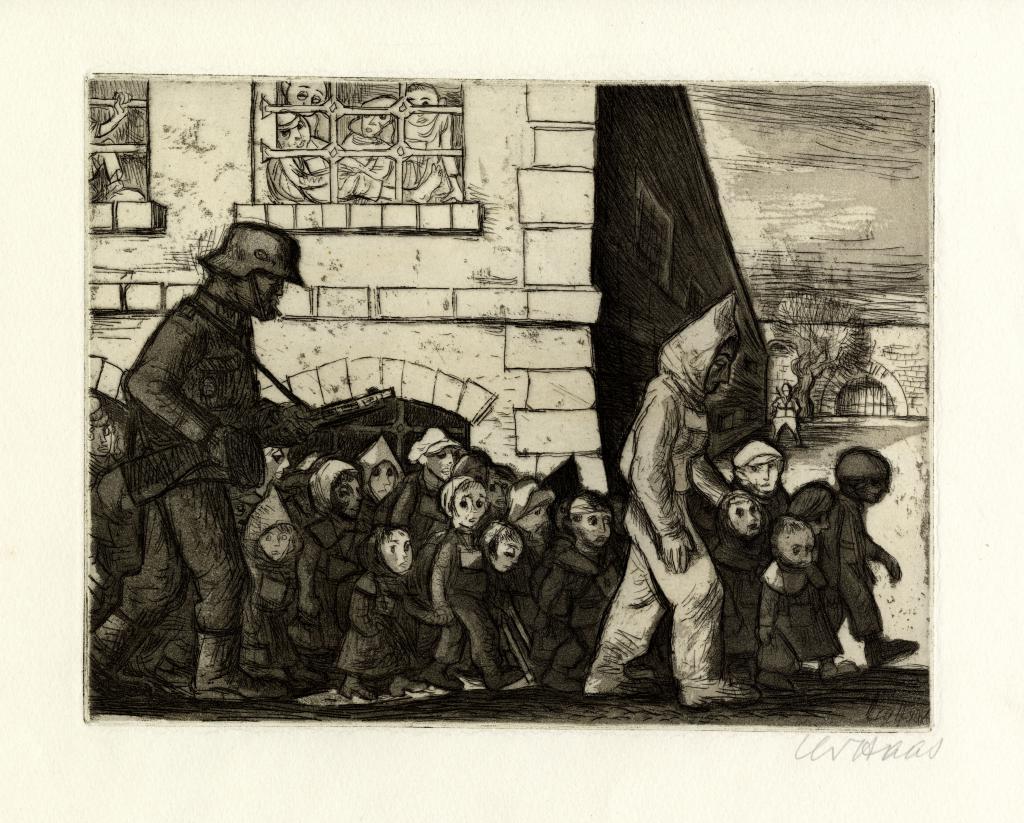
Art from the Holocaust - colors and hidden symbols in the forbidden works
ArtWizard 12.04.2021
"Through art, we can feel the power and the suffering of human beings," said Chancellor Merkel in 2016 at the opening of an art exhibition on the Holocaust Remembrance Day in Berlin. "The paintings are a warning for us, each one in its own way: What happened is not to be forgotten, the memory of the victims has to be kept and we have to do everything with all our power so that it won’t happen again."
A few days ago, on the 8th of April 2021, the world remembered again the horrible events that happened during the Holocaust. Among the many ways to remember these events is through music, visual art, and sculptures, showing what spirit can a human being might have, to respond to the mass killing with art. Art remains thus the most memorable monument to remember and honor the victims of the Holocaust. Some of the works are colorful, as a response to the fear of the world outside the home of the artist, others were made in secret in concentration camps bearing the grey and black colors of death.
Some little-known artists made their paintings in concentration camps. Among those artists is Leo Haas, a Czech prisoner working at the Theresienstadt ghetto during the day and creating his drawings by night, including a hidden symbol, a secret letter “V”. His drawing portrays a serpentine line of a long road, showing the arrival of a mass colon of prisoners at the Theresienstadt Ghetto.
.jpeg)
Leo Haas, Transport Arrival, 1942
The determination of the artists to respond to the mass murders with art is astonishing, as well as their determination to smuggle art supplies and hide their works. “When you’re fighting for your life and your basic human needs, creating art is not just an escape, it’s an active choice of defiance.”, said Bedrich Fritta a Czech - Jewish artist and cartoonist, died in Auschwitz concentration camp. His wife, Johanna, died of typhus in Auschwitz. Their son, Tomáš ("Tommy"), survived the Holocaust, keeping his father's works and donating them later to the Jewish Museum in Berlin.
.jpeg)
Bedrich Fritta, Building Barracks, 1942
Among the saddest drawings is the one of Pavel Fantl, The Song is over, depicting Adolph Hitler as sad Arlequin with a Nazi symbol and a broken guitar. Pavel Fantl was born in Prague in a working-class family. Together with his brother he received private Hebrew lessons and drawing lessons in addition to school lessons. Fantl studied medicine at the Charles University in Prague and subsequently a military doctor. After the German occupation of Czechoslovakia in 1939, he was discharged from the army as a Jew. He moved with his family to Kolín, where he had to do forced labor for the Gestapo to record the Jews in the district. A few years later, Fantl was imprisoned with his wife and child and his mother Ida in the Theresienstadt Ghetto concentration camp. He managed to hide and take with him many of his drawings made in the Theresienstadt and was later deported to Auschwitz, where his wife and child were murdered immediately after their arrival. He was murdered by SS guards on the Auschwitz Death March on January 7, 1945, near Hirschberg in Lower Silesia.
.jpeg)
Pavel Fantl, The Song is Over, 1942–4
Among the more known artists that have escaped the Holocaust but during his whole life continuing to depict the victims is Marc Chagall. An example of such a painting, saved by his niece from the Nazis is The Red Jew.

Marc Chagall, The Red Jew, 2015
Marc Chagall produced The Red Jew in 1915, as part of several related veteran portraits. This portrait is believed to have been painted in the town of Vitebsk, Belarus, which Chagall had returned to after a spell living in the French capital, Paris. The Red Jew depicts an aging man looking off into the distance to our left. He is perched on a park bench, or perhaps within a private garden, with a row of rooftops imaginatively depicted in the background. The warm palette boasts a multitude of tones of reds and pinks, with yellows providing contrast in the sky. The seated, slumped on a chair or bench in front of us old man is a wandering outcast, a very model of decrepitude, poverty, and loneliness, and yet he is a figure who also appears to possess all the symbolic weight of his persecuted people. He is both shrunken-small and immense in his presence. His cap grazes the top of the painting. His feet, blushed by a medley of colors, rendered in a slightly proto-Cubist way, turn out slightly.
In present days, the Holocaust is viewed as the emblematic manifestation of absolute evil. Its revelation of human nature's depths and the power of Nazi malevolent social and governmental structures have made it an essential topic of ethical discourse in fields as diverse as law, religion, art, literature, cinematography, and many other fields. It is however through art and music that humanity will remember.
